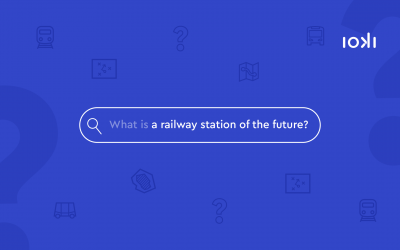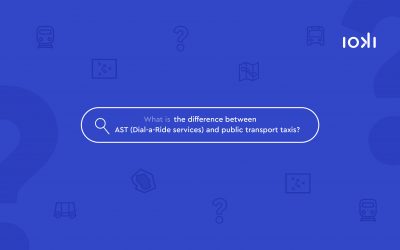Professor Rammler, you are a futurologist. But how exactly do you actually research the future?
Although the reputation of the futurologist precedes me, as a political scientist, economist and sociologist of technology I would not describe myself as such. Or to put it another way: I see myself above all as an empirically working scientist and this self-image stands in a certain contrast to the object of research of the future. The future – as something that does not yet exist cannot be researched scientifically, even empirically, in the true sense of the word – so let us rather call it future analysis. And it can only be meaningful and thus relevant if it has a broad theoretical and scientific basis. It is particularly important that this basis, the basis of all forecasts, is not one-dimensional, but rather represents the various perspectives on a problem in an interdisciplinary way.
Taking mobility as an example, the situation is the following: As a future-oriented mobility scientist, one must have the ability to understand and penetrate mobility as a complex construct and on the basis of present-day diagnostics. This means that first of all, a dedicated and empirically proven picture of the existing characteristics of traffic patterns and need structures is required. In a second step, this image must be reflected and thought about in a broader horizon – because in such a networked world as ours, no discipline can be analysed by itself and only for itself. It is always a question of the overall context, from which correlations as well as guiding trends are derived. Some of these trends are so long-term and profound that we understand them as global megatrends that affect all areas of life. These include trends such as urbanization, sustainability transformation, individualization, demographic development and, last but not least, the digital transformation. Each of these megatrends already has great potential for change in itself, but it is only when they interact that they develop their true transformative dynamics.
If we now combine these two factors, namely the picture of how a society functions and the interaction of the megatrends, we are able to derive theoretically and empirically sound statements about forthcoming developments – and so to say: the future. In this way, trends and their inherent potential and challenges such as the sharing economy, digitization, sustainability and urbanization become the focus of attention for mobility.
Mobility – we have already talked a little about this. But what exactly is mobility? How do you define the term?
Generally speaking, mobility is the accessibility of places. As time-geographical beings, we humans move from A to B, for example to get to work, do the shopping, visit family or friends. Mobility is therefore not primarily an end in itself, but always serves the realisation of activities. Incidentally, transport differs in the sense that it can be understood as the empirical expression of our mobility needs. Because in order to be mobile, we have to be on the road. Unfortunately, in the past, these two terms have become increasingly blurred and traffic and mobility have been equated, lately for reasons of politics and communication. Our current challenge is to rework the discriminatory nature of the terms and thus decouple them from one another. After all, in view of factors such as the scarcity of space and climate change, it should be the goal of all of us to enable a high degree of mobility with the minimum amount of traffic.
Additionally, digital transformation is a key driver here: digital networking, automation and the analytical power of artificial intelligence work together in such a way that we can expect an increase in the efficiency of traffic management. In concrete terms, this means that thanks to digital tools and solutions we can improve the planning of vehicles and routes, allign supply and demand more quickly and in a more demand-oriented manner, and make more efficient use of the existing infrastructure. It is precisely these innovative offerings that are needed in order to increase efficiency of use, such as those from BerlKönig and ioki, to make the most efficient use of scarce resources and space while realizing our previously described goal of more mobility and less traffic.
Can you imagine that the current crisis offers the opportunity to reflect on our current understanding of mobility and to renew it accordingly?
We know from the sociology of habit, that a routine has to be changed for 28 days in order to have a lasting effect of getting used to it. Well, the time factor seems to be on our side. In any case, the crisis is long and deep enough. But this answer alone would not be enough.
What is certain is that the current situation forces society as a whole to change. It calls for less social interactions from us, maintaing our physical distance and less interdependence from our fellow human beings. However, as an irrevocably social being, human beings will continue to find a way to express their sociality. The best proof of this is the increasing demand for telecommunication solutions. These are currently not only making it easier for us to maintain social contacts. Digital communication is gaining massive momentum, with the relocation of entire companies to the home office. It is becoming apparent that many of the distances we have travelled before as business trips or work trips are not absolutely necessary. The digital transformation provides us with sufficient alternatives. With regard to our future understanding of mobility, this observation holds a special potential: In the future, as the current situation shows us more than ever, it will not only be a matter of minimizing traffic, but – if proportionately – even substituting it.
My quiet – and I am putting emphasis on the term quiet – hope is that the crisis will allow us to take precisely this path and that we will be able to break through our current mobility patterns. I can imagine that technological, socio-cultural or socio-technical innovations will take place in sub-areas, which, in the field of virtualisation strategy and telecommunications, will give power to new forms of work or perhaps also new forms of settlement, which are somewhat less congested and at the same time more digitally networked. But I do not expect a large-scale cultural transformation project.



